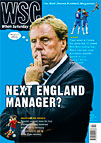 Hayes and Yeading’s controversial merge has yet to have the desired affect off the pitch with fresh doubts over the financial future of the club. John van Laer looks at where it all went wrong in West London
Hayes and Yeading’s controversial merge has yet to have the desired affect off the pitch with fresh doubts over the financial future of the club. John van Laer looks at where it all went wrong in West London
The official statement to announce the formation of Hayes & Yeading United FC in 2007 asserted that the two major clubs in the west London suburb of Hayes would “join forces, integrate resources and bring together a community, creating a new super-club on the non-League scene”. A key part of this ambitious plan was to sell Hayes FC’s stadium and land on Church Road, and use the funds raised to redevelop Yeading’s council-owned ground to create a multi-purpose facility that meets Conference grading regulations, while also generating extra income from renting out all-weather, floodlit pitches to the local community.
The merger certainly came as a shock to supporters of Hayes and Yeading, but few can contest that it was a sensible course of action. Dwindling crowds had made Conference-level football untenable for either club, despite periods of relative success in recent years. More worrying though is the fact that there has been no increase in attendances since the merger. Progress has been made on the pitch, with promotion to the Conference secured in a thrilling play-off victory against Hampton & Richmond Borough in 2009, which prompted a move to full-time status. Yet attendances struggle to top 300, with the local populace only showing an interest when big-name opponents come to town.
A lack of official communication about what is going on has left the club’s small band of supporters uncertain about the future. While there is now a much improved official website, an active Facebook presence and regular interviews and match highlights on a YouTube channel, very little concrete information is forthcoming about the new ground. The sale of Church Road took much longer than anyone had anticipated, and a further effect of the global financial downturn was that the land was evidently worth less to Barratt Homes than was originally expected. It is assumed that the reduced revenue from the sale has led to a scaling back of the plans for the new stadium, but as the club has not made any official announcement about the scope of the new development, that is hard to confirm.
When the departure from Church Road was confirmed in early 2011, it was as if those in charge of the move were taken by surprise. Opportunities to mark the occasion came and went, and the farewell to 90 years of football at the proud old ground were witnessed by just a few hundred people at a charity match in May. Once it was confirmed that Church Road would finally become a building site, rumours abounded about where Hayes & Yeading would play home games in 2011-12.
With Conference survival in the balance until late in the season, it was assumed the club were delaying making a decision until it was clear what grade of stadium would be required. Eventually, a one-year deal with Woking was announced on the day that relegation fears were banished. The official line was that the new stadium might even be ready by mid-season, but Christmas has arrived and very little progress has been made on the new ground. Other clubs publicise planned stadium developments and provide their supporters with information about the progress of the project, but the most recent update on the official Hayes & Yeading website shows a picture of a pile of rubble and gives no
indication of when the ground will be ready.
The new 3G pitches have been laid and are open for business on the site of the as yet unnamed stadium, which is a positive aspect of the story. The revenue this facility will generate could be a crucial new income stream for the club, but currently any extra money is swallowed up by the costs of sharing at Woking. This season there are no bar takings or function room bookings to help balance the books either. Ground-grading meetings with Conference officials will take place before the end of the season. By that time the club must be able to confirm security of tenure in the form of their own stadium, or possession of a groundsharing agreement for 2012-13.
New manager Nas Bashir is trying to put together a competitive team on a reduced budget, and the full-time experiment has been abandoned. Over 30 players have featured so far this season and the lack of consistency on the teamsheet has been reflected in unpredictable results and a slide towards the relegation zone.
The supporters’ club has subsidised coach travel to home games for the first half of the season but crowds have remained resolutely low, reaching a nadir of just 172 paying spectators for the visit of Bath City in August. The 40-mile round trip to Woking is just a bit too much to ask for some fans, especially in light of some disappointing results. With no information forthcoming about the move back to Hayes, can the club afford a second season in the wilderness?
From WSC 300 February 2012